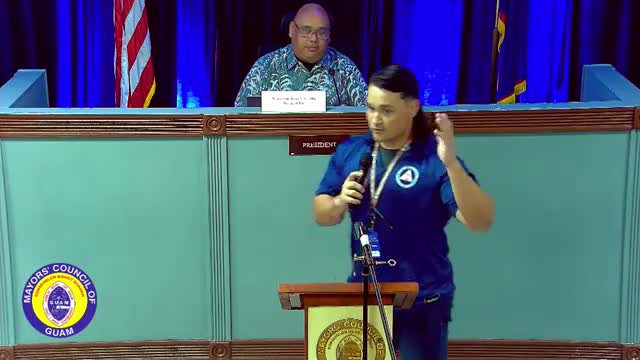
This article was created by AI using a video recording of the meeting. It summarizes the key points discussed, but for full details and context, please refer to the video of the full meeting. Link to Full Meeting
Cahill began by outlining the nature of tsunamis, emphasizing that they are typically caused by significant geological events such as earthquakes, underwater volcanic eruptions, or landslides. He highlighted the geographical vulnerabilities of Guam, situated in the Pacific's "Ring of Fire," which includes several tsunami threat areas like the Marianas Trench and the Nankai Trough.
The presentation categorized tsunamis into three types: local, regional, and distant. Local tsunamis, which can arrive within approximately 10 minutes of an earthquake, pose the most immediate threat. Cahill stressed the importance of recognizing natural warning signs, such as prolonged shaking, sudden ocean level changes, and a loud ocean roar.
Cahill also discussed the current tsunami alert system, which includes sirens and emergency broadcasts. He noted that while the AHA sirens are crucial, there is a need for improved communication strategies, especially in areas where sirens may not be heard. The discussion included the potential for a wireless emergency alert system and the development of a mobile app to disseminate alerts more effectively.
Several mayors raised concerns about the adequacy of current evacuation plans and the need for more comprehensive training for residents. The mayor of Senahunya emphasized the importance of timely communication during emergencies, suggesting that regular drills and testing of the sirens at varied times could enhance public awareness and responsiveness.
The meeting concluded with a call for a more robust mitigation strategy, including the evaluation of evacuation routes and the potential for permanent relocations in high-risk areas. The mayors collectively recognized the need for ongoing education and preparedness initiatives to ensure community safety in the event of a tsunami. The next steps involve further discussions on funding and resources to enhance Guam's tsunami response capabilities.
Converted from Mayors' Council of Guam Monthly Regular Meeting - April 2, 2025 meeting on April 03, 2025
Link to Full Meeting
Comments
View full meeting
This article is based on a recent meeting—watch the full video and explore the complete transcript for deeper insights into the discussion.
View full meeting